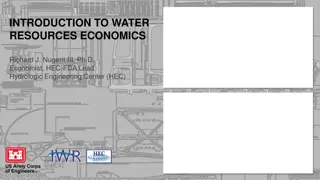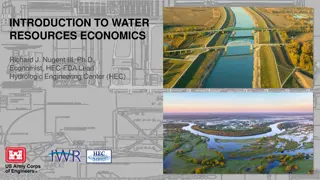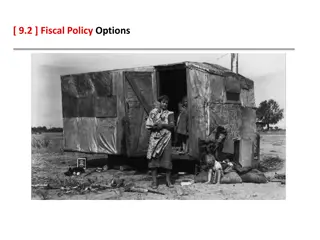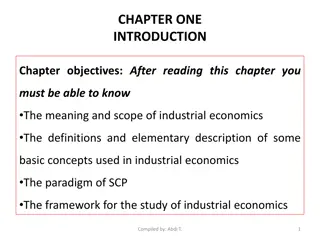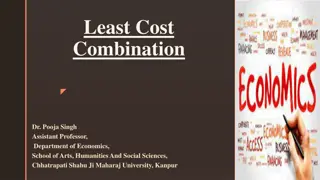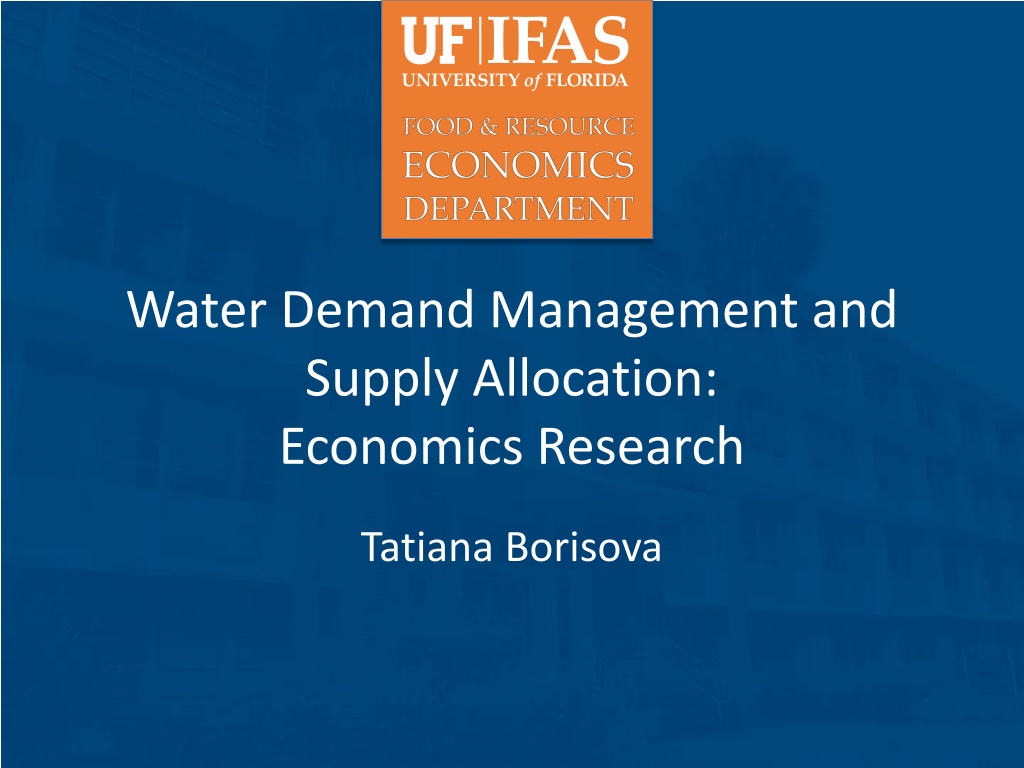
Water Demand Management: Economic Research Insights
Explore the economics of water demand management and supply allocation through research findings on demand projections, pricing strategies, and household influences. Discover key factors affecting water use and utility revenues, along with uncertainties in demand forecasting. Gain insights into effective non-price conservation strategies and the impact of prices on water consumption and income.
Download Presentation

Please find below an Image/Link to download the presentation.
The content on the website is provided AS IS for your information and personal use only. It may not be sold, licensed, or shared on other websites without obtaining consent from the author. If you encounter any issues during the download, it is possible that the publisher has removed the file from their server.
You are allowed to download the files provided on this website for personal or commercial use, subject to the condition that they are used lawfully. All files are the property of their respective owners.
The content on the website is provided AS IS for your information and personal use only. It may not be sold, licensed, or shared on other websites without obtaining consent from the author.
E N D
Presentation Transcript
Water Demand Management and Supply Allocation: Economics Research Tatiana Borisova
2010 Workshop: What we NEED to help Water Utilities plan for water supply in the face of climate impact uncertainties and risk Projections of demand based on demographics, socioeconomics temperature, rainfall projections Policies/regulations that are suited unique to each regions Source: based on the workshop report at http://floridawca.org/sites/default/files/documents/WkspSummarySept%2022- PublicWaterUtilities-ClimateImpacts_Final.pdf
Water Demand Projections Property-level water demand as a function of - Property characteristics (year the house was built, in-ground irrigation, irrigated area, type of landscaping, etc.) - Household characteristics: demographics (size of household, age, etc.) - Income level - General state of the economy - Weather conditions / soil moisture / seasonality - Price levels and the price structure - Non-price water conservation strategies (outreach programs, etc.) Indoor versus outdoor demand Summer demand versus winter demand Long-run versus short-run responses to conservation policies single family, multi-family, commercial, industrial, and other categories
Example: Water demand response to price changes Studies published in 2002 2012 100 studies were identified, yielding 638 price elasticity estimates 10% increase in price results in 0.0% - 30.5% reduction in use 3.7% reduction in water use (median) Most recent economic studies show that utilities can increase revenues by increasing the price Price change: achieving water conservation and cost-recovery objectives price revenue price revenue Sebri, M. (2014) A meta-analysis of residential water demand studies, Environment, Development, and Sustainability, 16, 499 520.
Example: Water demand and household size Studies published in 2002 2012 23 studies, yielding 70 estimates of sensitivity (elasticity) of water demand to household size For a family of 4, increase in household size by 1 person will result in 0.3% - 35.3% increase in water use mean of 8.9% increase Sebri, M. (2014) A meta-analysis of residential water demand studies, Environment, Development, and Sustainability, 16, 499 520.
Questions to be answered Better grasp on the uncertainties associated with demand forecasts Florida-specific studies New estimation methodologies New types of water use data property-level Indoor vs outdoor Billing period vs smaller time intervals (smart meters) Additional data on households and properties Survey of socio-demographics, landscape attributes, etc. Statistical techniques Effectiveness of non-price strategies Effect of prices on water use (and utility revenues): Price levels / price structure Income Value of water for residential water use
Regulatory / legal issues constraining water supply for urban use Predicting water demand in other sectors: Landuse changes Landuse as a function of water availability? Ag water demand Water demand for in-stream water use (MFL) Value of water in alternative uses (including future use?) Regulatory decisions/policies to increase / constrain water withdrawals from aquifer, as water resources become more scarce Value of water in alternative uses? Modifications to existing policies? (water farming? Charging users for water withdrawal?)
Connect. Explore. Engage. Food and Resource Economic Department (FRED) /fred.ifas.ufl @UF_IFAS_FRED

